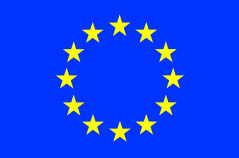The Consumer Credit Directive lists the information that need to be given in advertising of credits and as part of credit offers and provides for a 14 days reflexion time, during which the consumer may back out of the agreement without charge. Following a crackdown on websites offering consumer credits, more than 3 out of 4 sites checked a year ago now comply with EU law (compared with only 30% in September 2011). Further improvements should come as national authorities pursue their actions on outstanding cases.
In this EU co-ordinated „Sweep” investigation, which took place in September 2011, national enforcement authorities checked 565 websites across the 27 Member States, Norway and Iceland. Of the 70% of sites flagged for further investigation at the time, 10% were finally deemed compliant and 35% were corrected after action by national authorities. The remaining websites either no longer exist or are subject to on-going administrative or court proceedings.
The main problems detected in this sweep were:
– Missing information in consumer credit advertising (e.g. on the annual percentage rate of charge (APR): 258 sites were failing to display all the standard information required by the Consumer Credit Directive.
– Omission of key information on the offer and/or misleading presentation of the costs (e.g. type of interest rate (fixed, variable or both), duration of the credit): 244 sites failed to give clear information about all the different elements of the total cost.[2]
For more information: http://ec.europa.eu/consumers/enforcement/sweeps_en.htm
ECC-Net lists the most important tips about entering into a loan:
What you need to check before and when signing a consumer credit online
1) Check that the website which offers loans provides the trader`s name, geographical and email addresses.
2) When you look for information on web pages advertising loan offers, the creditor has to use a representative example of a loan to illustrate the cost related to the sort of credit you are interested in. This has also to include the Annual Percentage Rate of charge (APR) which represents what the credit will cost every year on average. With this single figure (APR), whose definition is standardised all across the EU, you can compare various offers much easier and with confidence.
3) When contacting the creditor to get more information, check if you are provided with “pre-contractual information” in a standardised format (click here to get more details on how this information should look like).
4) Make sure that you receive comprehensive information in the credit contract itself about the contract terms and get a copy sent to your address by normal mail. The contract shall be drawn up on paper or on another durable medium.
5) Be aware that you as a consumer have 14 calendar days to withdraw without any explanation from a credit agreement that you have signed.
6) In case of problems relating to any of the above points with a creditor that is located in another Member State you can report it to your local European Consumer Centre. In other cases, you can turn to your local consumer organisation.
[1] ECB, Euro Area Statistics, www.ecb.int/stats/money/aggregates/bsheets/html/index.en.html
[2] See IP/12/6 on the first phase of the Sweep 2011


